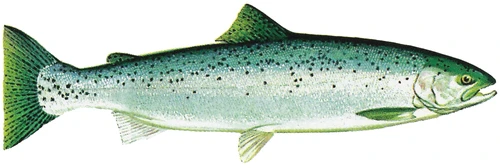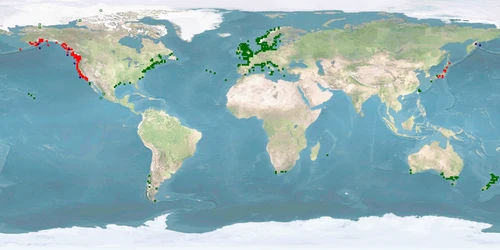Information
Authors: Jenny Volstorf, Paolo Panizzon
Version: B | 2.0Published: 2025-04-23
- test trial with broadened water parameters for juveniles (crit. 3.3) and test table in the summary resulting in major editorial and content changes
link corrections
1 Summary
In a test trial, we researched additional water parameters (about which you can read in 3.3) and display them here for JUVENILES. In the future, it will be possible to display those and other parameters and to select them for all age classes covered. Stay tuned!
2 General
- Escapes: rear only in environments where it naturally occurs D1 and prevent escapes. Else, escapees from fish farms have negative or at most unpredictable influences on the local ecosystem D2. With the potamodromous form ("Rainbow trout"), prepare for sexual maturity (and thus spawning) from ca 4 years on D3 and take measures against spawning into the wild.
- Rearing stages: of the anadromous form ("Steelhead trout"), do not rear individuals past the parr stage D3. Once smoltified, individuals adapt to seawater and have the urge to migrate D4. Closed systems cannot accommodate this.
3 Designing the (artificial) habitat
3.1 Substrate and/or shelter
- Substrate:
- Substrate: no clear substrate preference D5. For the most natural solution and to decrease fin erosion D6, provide a range of rock sizes from gravel to boulder and different kinds of vegetation. A combination of vegetation (tops of Douglas firs) and overhead cover (double layer camouflage netting on PVC frame) may increase growth in fry via increasing competitive abilities D7. AquaMats may be beneficial for welfare in terms of longer fin length D7. Further research needed on the mat-to-volume ratio. Note that the placement of AquaMats in the raceway parallel to the water flow is important, otherwise they might function as separators and increase fish density between them D7.
- For substrate and...
...nest building → A1,
...occupation → A2.
- Shelter or cover:
- Cover: in the wild, takes cover from overhead under rocks and stones and undercut banks D8. For the most natural solution, provide at least one coarse substrate shelter per individual; alternatively, provide artificial cover inside the system or outside (e.g., double layer camouflage netting on PVC frame D5, black plastic sheet, solid top D8). Avoid complete cover in respect for the diurnal rhythm A3. Provide cover from fry age on, otherwise, the individuals might not learn to use them for hiding D8.
- Vegetation: in the wild, takes cover under large woody debris and conceals itself in vegetation and small woody debris D8. For the most natural solution, provide vegetation and large and small woody debris.
- Shelters: in the wild, seeks shelter under rocks and stones or conceals itself in silt and clay at low temperatures D8. If temperatures at the margins of the range of tolerance D9 cannot be avoided, decrease water velocity D10 and provide shelters or withdrawal opportunities (see above).
- Safety measures: ensure safety measures to avoid individuals jumping out of the holding system D11.
3.2 Photoperiod
- Photoperiod: given the distribution D1 D12, natural photoperiod is 6-20 hours, depending on the season. Provide access to natural (or at least simulated) photoperiod and daylight.
- Light intensity: no ethology-based recommendation definable so far.
- Light colour: for better growth, provide red light D13. Further research needed to determine whether this only holds under 150 lux. In stressful situations, e.g. under confinement, provide blue or white light at 150 lux, as it decreases stress reactions D14. Further research needed.
- Resting period: respect the diurnal rhythm of Rainbow and Steelhead trout and its resting period at night or in the dark D15.
3.3 Water parameters
- Temperature: in the wild, temperature range 0-20.5 °C; no clear temperature preference, probably best kept at 10-16 °C D9, eggs at 7-10 °C [Kwain 1975] [Poppe et al. 2017]. Below may mean lower growth for juveniles D16, below and above may mean increase in malformations [Poppe et al. 2017] and survival in eggs and larvae [Kwain 1975]. Adjust temperature when you notice avoidance behaviour D8 D15 D17. Avoid sudden changes in water temperature of 3 °C or more, as it increases mortality D18.
- Water velocity: no clear velocity preference D10. Provide variations in the direction and the velocity of the water inlet preferably between 3 and 50 cm/s, depending on water temperature D10.
- Oxygen: maintain oxygen level that ensures welfare depending on temperature (→ Temperature) and stocking density (→ A4). Individuals prefer 100% [Poulsen et al. 2011], probably best kept at 80-100%, below may mean lower growth [Waldrop et al. 2020] and lower activity [Poulsen et al. 2011].
- Salinity: given the anadromous migration type (Steelhead trout), natural salinity is at freshwater level from egg to parr stage (and again as grilse) and seawater level at smolt stage D4. Given the potamodromous migration type (Rainbow trout), natural salinity is at freshwater level D4.
- pH: probably best kept at pH 7-8 [Ye and Randall 1991]. Further research needed.
- Turbidity: in the wild, lives in ultra-oligotrophic to eutrophic lakes, water transparency is at 0.5-15 m Secchi depth D19. Tolerates short-term turbidity ≤80 NTU [Sigler et al. 1984], probably best kept <15 mg/L [Rohrer 2025 pers. communication]. Further research needed.
- Ammonia: tolerates short-term concentration ≤0.025 NH3-N mg/L, probably best kept at ≤0.013 NH3-N mg/L, otherwise it may mean deterioration in health [Becke et al. 2019]. Please note the difference to total ammonia nitrogen (TAN) which is best kept at ≤1 mg/L for most farming conditions, though toxicity is mainly dependent on pH [Timmons and Ebeling 2007]. Further research needed.
- Nitrite: probably best kept at ≤0.3 mg/L [Timmons and Ebeling 2007]. Further research needed.
- Nitrate: probably best kept at ≤332 mg/L [Timmons and Ebeling 2007]. Further research needed.
- Carbon dioxide: tolerates short-term concentration ≤26.5 mg/L [Good et al. 2010] [Traynor et al. 2023], but best kept below, otherwise it may mean deterioration in health [Good et al. 2010]. Further research needed.
3.4 Swimming space (distance, depth)
- Distance: in the wild, Rainbow and Steelhead trout either display large-scale movement or site fidelity D20. Provide enough space, bearing in mind the planned stocking density A4.
- Depth:
- Depth range: in the wild, found at 0.1-10 m, up to 100 m D17. Provide at least 10 m, bearing in mind the planned stocking density A4. Individuals should be able to choose swimming depths according to life stage and status D17 D21 D22.
- Flight: no ethology-based recommendation definable so far.
- Temperature layers: in habitats with water layers with different temperatures, prepare for individuals migrating to layers with preferred temperatures D9 D17, and avoid crowding in these layers by providing enough space.
4 Feeding
- Alternative species: carnivorous D23, trophic level 4.1 D24. If you have not yet established a Rainbow trout farm, you might consider to opt for a species that can be fed without or with much less fish meal and fish oil in order not to contribute to overfishing by your business D25.
- Protein substitution: if you run a Rainbow trout farm already, try to substitute protein feed components that have so far been derived from wild fish catch, while taking care to provide your fishes with a species-appropriate feed D23:
- Invite a feed mill and other fish farmers in your country to jointly establish a recycling syndicate that converts the remainders and the offcuts of fish processing into fish meal and fish oil, separating the production line corresponding to the species of origin in order to avoid cannibalism →fair-fish farm directives (point 6).
- Inform yourself about commercially tested substitutes for fish meal and fish oil, like insect or worm meal or soy, with an appropriate amino and fatty acid spectrum.
- Feed delivery:
- Feeding frequency and time, feed delivery, self-feeders: in the wild, bottom grazer or active pursuer D26 D27, mostly diurnal but also nocturnal D15. Because of large inter-individual differences in activity rhythms, the most natural solution is to provide food at 1) varying intervals or 2) constant intervals but day as well as night, while making sure not to disturb the resting part of the population. If only diurnal feeding times are possible, make sure nocturnal individuals do not starve by closely monitoring individual weights. To avoid territoriality and decrease aggression, provide the food spatially and temporarily unpredictable and spatially dispersed N/A N/A. Alternatively, install a self-feeder and make sure all Rainbow trout adapt to it. No ethology-based recommendation definable so far on speed of feed delivery. Note decreased feeding at temperatures <13 °C D16 and in new situations given personality differences D30 and reduce the amount of food offered accordingly (if not using a self-feeder).
- Food competition: make sure to provide sufficient feed from 2-6 weeks after hatching on D31. Provide a ration of >5% body weight to decrease food competition and differences in growth D32 D33 as well as the rate of aggression, number of aggressive juveniles, and number of chases per individuals per minute compared to lower amount of food D27. Further research needed.
- Particle size: no ethology-based recommendation definable so far.
- Feed enrichment: no ethology-based recommendation definable so far.
5 Growth
- Maturity: in the wild, matures at ca 4 years D3. Even if manipulating time of maturity were possible, refrain from it, as we have not found studies reporting possible long-term effects on welfare → fair-fish database's understanding of fish welfare.
- Manipulating sex: even if manipulating sex were possible, refrain from it, as we have not found studies reporting possible long-term effects on welfare → fair-fish database's understanding of fish welfare.
- Sex ratio: in the wild, sex ratio of males to females of 1:1 D34. Further research needed. For the most natural solution, maintain this sex ratio.
- Size-grading: when in small groups, better size-grade juveniles, otherwise they aggressively establish a social hierarchy D35 which increases stress D22 and influences growth D33 D18. In larger groups, comparable aggression in single-size and mixed-size populations D36, so size-grading does not seem beneficial.
- Other effects on growth:
- Tank colour: for better growth and in line with preference, provide green tanks D37 D38.
- Dam and sire: dam influences fertilisation, mortality from fertilisation to eyed-embryo stage and from eyed-embryo stage to hatching, hatchability, body weight, percent yolk at hatching and emergence, duration of emergence period, growth from 40 to 52 days post fertilisation, length of time to 50% yolk, and yolk absorption from 40 to 52 days post fertilisation; sire influences time to 50% emergence and yolk conversion efficiency from 40 to 52 days post fertilisation, so choose dams and sires accordingly D39.
- Polyculture: in the wild, co-exists with Bridgelip sucker, Brown trout, Chinook salmon, (Eastern) Brook trout, Longnose dace, Mountain whitefish, Sculpin, Starry flounder, Striped bass, Three-spined stickleback, Tidewater goby, and Top smelt D40. Further research needed for benefits of polyculture.
- Deformities and malformations: might display deformities of upper and lower jaw as well as fin erosion D41. Further research needed. Although not hindering growth, we consider it welfare diminishing (→ fair-fish database's understanding of fish welfare) and recommend checking for deformities and rearing strains with few or without malformations.
- For growth and...
...substrate →A5,
...light colour →A3,
...water temperature → A6,
...stocking density → A4,
...acute stress →A7.
6 Reproduction
- Nest building: female builds several pits/nests in what is called a redd D42, gravel breeder D43. For the most natural solution, provide gravel without fine material (mudd, clay), high water velocity, and about 13 cm water depth.
- Courtship, mating: respect courtship behaviour in which male rubs its snout over and under the female's tail D44. Allow for pair bond if individuals display monogamy D45.
- Spawning conditions: for spawning substrate, water velocity, water depth → Nest building (above). Respect natural spawning season in autumn to winter, sometimes till summer, in fresh water D46. No ethology-based recommendation definable on specific temperature and spawning sequence. Hints that survival and growth rate are heritable D39, so select breeding individuals by the highest survival and growth rate. In the wild, male:female ratio resulting in spawning is 1:1 D47. Further research needed. For the most natural solution, maintain this ratio. Respect the natural spawning sequence in which female and male spawn simultaneously facing opposite directions, taking all in all a few seconds D48.
- Fecundity: one redd consisting of 6-7 pits with 550-1,350 eggs each per female D49. Further research needed. Even if manipulating fecundity were possible, refrain from it, as we have not found studies reporting possible long-term effects on welfare → fair-fish database's understanding of fish welfare.
7 Stocking density
- Maximum: the businessplan should be calculated on the basis of a maximum stocking density that will never exceed the tolerable maximum with regard to fish welfare.
- Stocking:
- Stocking larvae: no ethology-based recommendation definable so far.
- Stocking juveniles and adults: in rivers, low density (0.01-1.3 juveniles/m2 D50), parr (Steelhead trout) solitary, kelt (Steelhead trout) solitary or in groups, juveniles (Rainbow trout) in groups D18. Further research needed. High density in captivity from 75 kg/m3 upwards disrupts natural swimming patterns and diurnal activity rhythm D51. For better welfare, keep at <25 kg/m3, preferably even <10 kg/m3 D51.
- Restriction:
- Habitat structuring: consider loss of space due to structures inside and outside the system A5 and calculate density accordingly.
- Environmental conditions: in the wild, displays a large variability in preferences for substrate D5, water temperature D9, turbidity D19, water velocity D10, and depth D17. Consider increased density at places with preferential conditions A5 A6 A8 and calculate density accordingly.
- Aggregation: in the wild, alevins (Steelhead trout) build schools, juveniles (Rainbow trout) congregate in groups D52. Further research needed. Consider increased density at places due to formation of schools or groups and calculate density accordingly.
- Aggression: choose density given displayed aggression D36. Further research needed. Aggression may entail displays, attacks, chases, nips, bites D36.
- Territoriality: territorial D27 D11. Consider space loss due to territoriality and calculate density accordingly.
- Interaction: as show the above influence factors, stocking density is only one part of a complex interaction of factors to affect welfare. It should never be considered isolatedly.
8 Occupation
- Food search: provide gravel so that individuals may search for food D5 D26.
- Challenges: if after decreasing stress A7 and providing everything welfare assuring, you still notice stereotypical behaviour, vacuum activities, sadness, then provide mental challenges, diversion, variety D53 and check reactions.
9 Handling, slaughter
9.1 Handling
- Stress coping styles: individuals differ in their ability to cope with stress D11 D30, so assume the smallest common denominator during stressful situations and handle with care and high efficiency.
- Stress measurement:
- Physiological stress indicators: plasma cortisol exceeding <2-10 ng/mL D51 D22 D14 D54 or 1.5 µg/dL D55, plasma glucose exceeding 73.1-82.3 mg/mL D14 or serum glucose exceeding 28-75 mg/dL D55 D54 indicates stress. As a non-invasive stress indicator, use fin erosion mainly of posterior dorsal and caudal fins and add substrate (→ A5), increase feeding ration (→ A9) or decrease stocking density (→ A4) if you notice erosion.
- Abnormal behaviour: after, e.g., changing parameters, check for behaviour deviating from the norm D5 D8 D26 D15 D56 D57 D20 D17 D41 D42 D44 D45 D48 D49 D43 D37 D52 D35 D27 D58 D59 D53 D11 D30.
Random and disorganised swimming D51 and opercular beat rate exceeding 52.6-55.2 beats/min D55 indicates stress.
Rocking from side to side on the substrate on either pectoral fin, rubbing lips into substrate or against tank walls indicates pain D60.
Taking cover and decrease in feeding and swimming or freezing altogether indicates fear D61.
- Stress reduction:
- Noise: hearing sensitivity is unaffected by noise of up to 150 dB D62. Still, noise (for Rainbow trout) should not exceed levels of natural freshwater habitats (40-100 dB).
- Directing individuals: to direct individuals in the habitat (e.g., for cleaning purposes), make use of Rainbow trout's ability to be conditionable to reduce stress D58 D59.
- Cage submergence: no ethology-based recommendation definable so far.
- Pain treatment: applying an analgesic after a painful treatment decreases the reactions shown otherwise D63.
- Handling: handle as carefully as possible, as it causes stress D55. If only a sample of individuals is to be handled, separate them from the main population to not stress the uninvolved conspecifics D64.
- Confinement: avoid confinement, as it causes stress and decreases growth hormone D14. If unavoidable, provide blue or white light at 150 lux D14. Further research needed. After confinement for one hour, let recuperate for at least four hours. Low cortisol levels in long-term confinement could also be due to overhead cover and protection from predation, so avoid long-term confinement D65. Further research needed.
- Crowding: no ethology-based recommendation definable so far.
- Transport: avoid live transport, as it causes stress D54. If unavoidable, add salt to the transport water to decrease stress D54.
- Disturbance: avoid lowering objects into the habitat or, if unavoidable, administer regularly, so that the individuals may adapt D30.
- For stress reduction and...
...substrate → A5,
...feeding frequency → A9,
...food competition → A9,
...stocking density → A4,
...stunning → A10.
9.2 Slaughter
- Stunning rules: render individuals unconscious as fast as possible and make sure stunning worked and they cannot recover D66.
- Stunning methods: prefer electrical stunning, because it renders individuals unconscious fast if administered correctly and with appropriate current D67 D68. For long unconsciousness, opt for electric field of strength of 250 V/m r.m.s. using a sinusoidal 1,000 Hertz waveform for 60 seconds in a rotary stunning unit D67; alternatively, choose 180 V at 50-60 Hertz for 30 seconds with an eletronic teaser D68.
Immersion in ice prolongs the time of unconsciousness D68 and could be used if the fish is already stunned and killing immediately afterwards (see below) is not possible. Refrain from using it as a stunning method, though, because of the increased time to loss of visual evoked responses compared to asphyxia at room temperature D68. - Slaughter methods: bleed or gut individuals immediately after stunning, i.e. while unconscious.
10 Certification
- Certification: fair-fish international association warmly advises to follow one of the established certification schemes in aquaculture in order to improve the sustainability of aquafarming. Adhering to the principles of one of these schemes, however, does not result in animal welfare by itself, because all these schemes do not treat animal welfare as a core issue or as an issue at all. Therefore the fair-fish database has been designed as a complement to any of the established certification schemes. May it help practitioners to improve the living of the animals they farm based on best scientific evidence at hand.
- To give you a short overview of the most established schemes, we present them below in descending order of their attention for animal welfare (which is not necessarily the order of their sustainability performance):
- The fair-fish farm directives are not present on the market, we cite them here as a benchmark. The directives address fish welfare directly by being committed to the fair-fish database: for each species, specific guidelines are to be developed mirroring the recommendations of the fair-fish database; species not yet described by the fair-fish database cannot be certified. In addition, the directives address a solution path for the problem of species-appropriate feeding without contributing to overfishing.
- The RSPCA (Royal Society for the Prevention of Cruelty to Animals) has developed sophisticated welfare standards for two farmed species so far: Atlantic salmon (last version: February 2018) and Rainbow trout (last version: March 2018), embracing the full life cycle and all aspects of life conditions in captivity, and widely applied by farmers in the UK as well by farmers in other European countries. From an animal welfare point of view, and for these two species, the RSPCA standard is for sure the most stringent one on the market, and the one next to the conception of fair-fish (which however would hardly agree to certify the two species due to their low WelfareScore).
- The Naturland Standards for Organic Aquaculture (Version 06/2018) generally address animal welfare with words similar to the fair-fish approach: "The husbandry conditions must take the specific needs of each species into account as far as possible (…) and enable the animal to behave in a way natural to the species; this refers, in particular, to behavioural needs regarding movement, resting and feeding as well as social and reproduction habits. The husbandry systems shall be designed in this respect, e.g. with regard to stocking density, soil, shelter, shade and flow conditions".
In the details, however, the standards scarcely indicate tangible directives, the only ones for Rainbow trout being a maximum stocking density of 20 kg/m3. Live transportation is limited to 10 hours max, to 1 kg/8 L max, and to adequate provision of oxygen, with water exchange after six hours. - The GAA-BAP Finfish and Crustacean Farms Standard (Issue 2.4, May 2017) directly addresses animal welfare: "Producers shall demonstrate that all operations on farms are designed and operated with animal welfare in mind." Farms shall "provide well-designed facilities", "minimize stressful situations" and train staff "to provide appropriate levels of husbandry". Yet the standard does not provide tangible and detailed instructions for the practitioner, let alone species-specific directives.
In September 2017, GAA-BAP received a grant from the Open Philanthropy Project to develop best practices and proposed animal welfare standards for salmonids, tilapia, and channel catfish. Thus, fish welfare on GAA-BAP certified farms might become more tangible in the future, eventually also for Gilthead seabream at a later date. - The GlobalG.A.P. Aquaculture Standard (Version 4.0, March 2013) "sets criteria for legal compliance, for food safety, worker occupational health and safety, animal welfare, and environmental and ecological care". The inspection form includes criteria like "Is the farm management able to explain how they fulfil their legal obligations with respect to animal welfare?", "If brood fish are stripped, this should be done with the consideration of the animal's welfare." or "Is a risk assessment for animal welfare undertaken?". The scheme claims that 45 out of a total of 249 control points cover animal protection, yet it does not provide any tangible directives, let alone species-specific directives.
- The ASC Aquaculture Stewardship Council. The ASC standards address fish welfare only indirectly, as a function of a "minimum average growth rate" per day, a "maximum fish density at any time", and a "maximum average real percentage mortality". fair-fish sees animal welfare as an intrinsic value, not just as a result of optimising neighbouring values like health care and management procedures.
The ASC standard for Trouts (version 1.0, February 2013) does not specifiy threshold values for mortality, growth rate, and stocking density, possibly due to its early version.
In November 2017, ASC received a grant from the Open Philanthropy Project to develop an evidence-based fish welfare standard that is applicable to all ASC-certified species. ASC intends to share its approach to fish welfare with all farms engaged with the ASC program and encourage adoption of it, which means that the fish welfare standard will function as a non-mandatory add-on to the ASC certification. - The Friend of the Sea (FOS) Standards for marine aquaculture of fish (revised November do not even address animal health or animal welfare issues.
In May 2017 however, FOS signed a Memory of Understanding with fair-fish international on developing fish welfare criteria for the FOS standard. In November 2017 fair-fish international association received a grant from the Open Philanthropy Project to assess the welfare of fish on FOS certified farms, develop farm-specific recommendations, and to develop animal welfare criteria for the FOS standard. Thus, fish welfare on FOS certified farms might become tangible in the future.
Info hub
- Manuals or farm information that we used (among other sources) in the WelfareCheck and/or Dossier:
- D’Agaro, Edo, PierPaolo Gibertoni, and Stefano Esposito. 2022. Recent Trends and Economic Aspects in the Rainbow Trout (Oncorhynchus mykiss) Sector. Applied Sciences 12: 8773. https://doi.org/10.3390/app12178773.
- Hoitsy, György, András Woynarovich, and Thomas Moth-Poulsen. 2012. Guide to the small scale artificial propagation of trout. Budapest: Food and Agriculture Organization of the United Nations.
- Noble, C., K. Gismervik, M.H. Iversen, J. Kolarevic, J. Nilsson, L.H. Stien, and J. F. Turnbull, ed. 2020. Welfare Indicators for farmed rainbow trout: tools for assessing fish welfare.
- Okumuş, İbrahim. 2002. Rainbow Trout Broodstock Management and Seed Production in Turkey: Present Practices, Constraints and the Future. Turkish Journal of Fisheries and Aquatic Sciences 2: 16.
- Woynarovich, András, György Hoitsy, and Thomas Moth-Poulsen. 2011. Small-scale rainbow trout farming. FAO Fisheries and Aquaculture Technical Paper 561. Rome: Food and Agriculture Organization of the United Nations.
- MyFishCheck: app to assess the welfare of your fishes. https://www.zhaw.ch/en/lsfm/institutes-centres/iunr/ecotechnologies-and-energy-systems/research-group-aquaculture-systems/myaquaculturefarm
- SOON: Q&A section for questions farmers might be most interested in
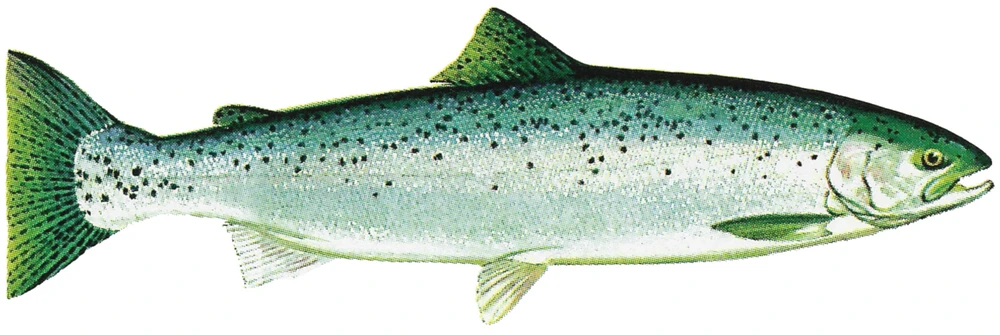
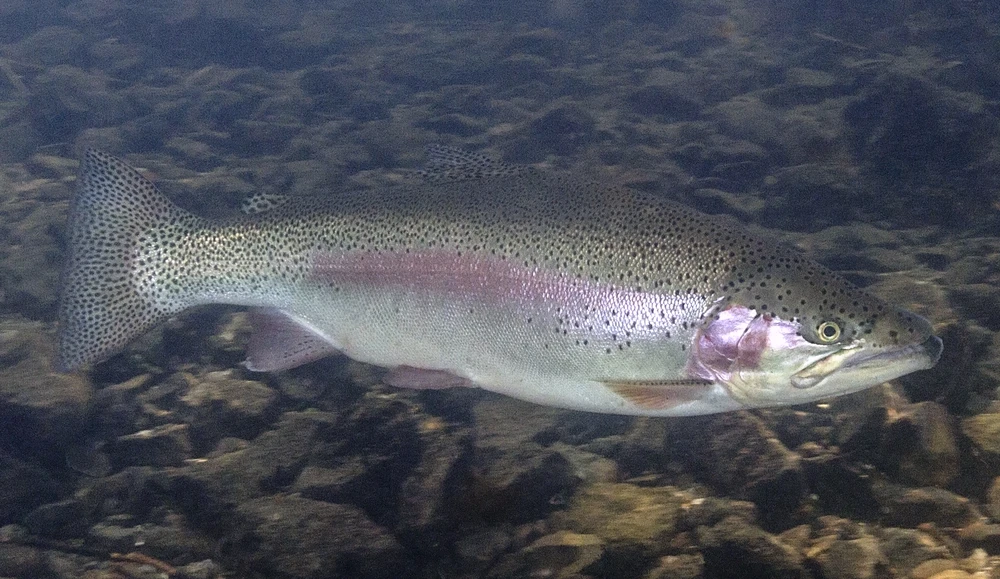

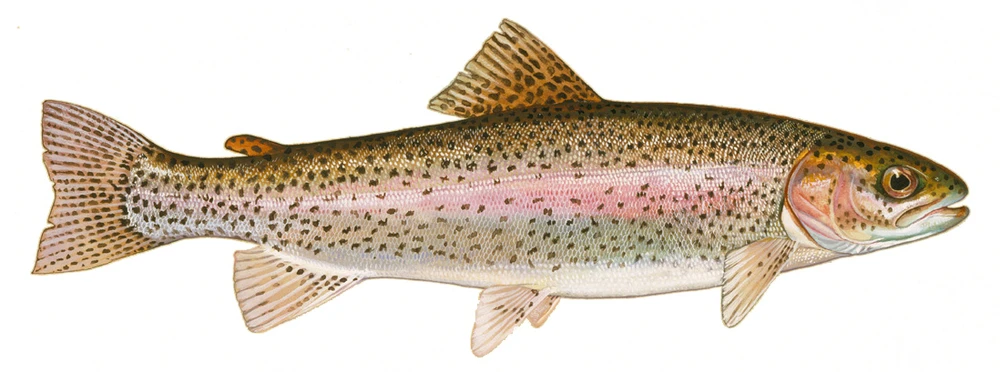
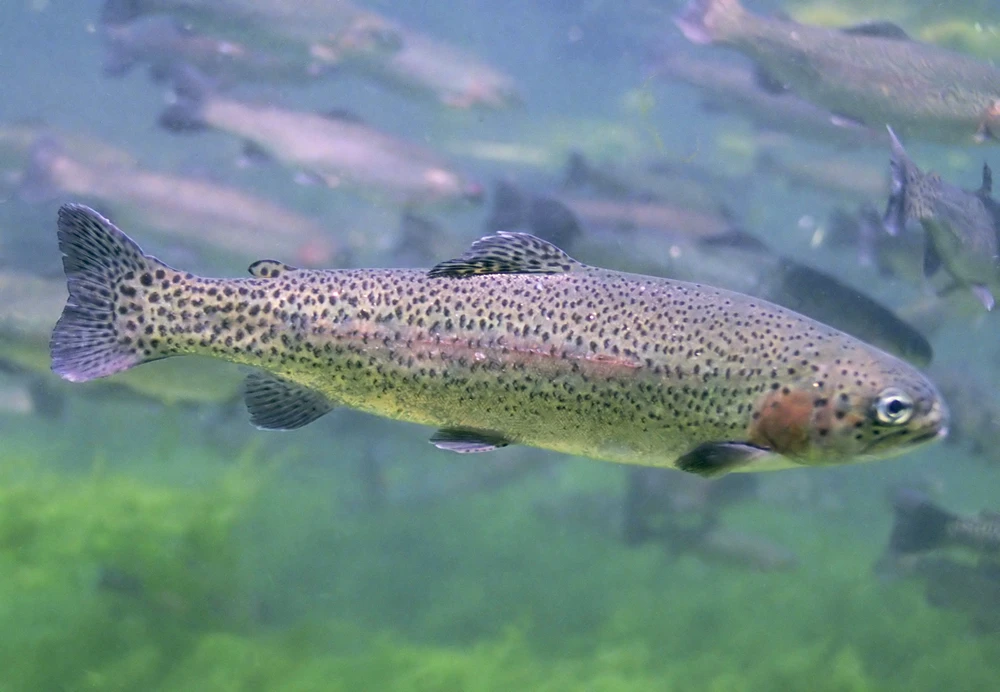
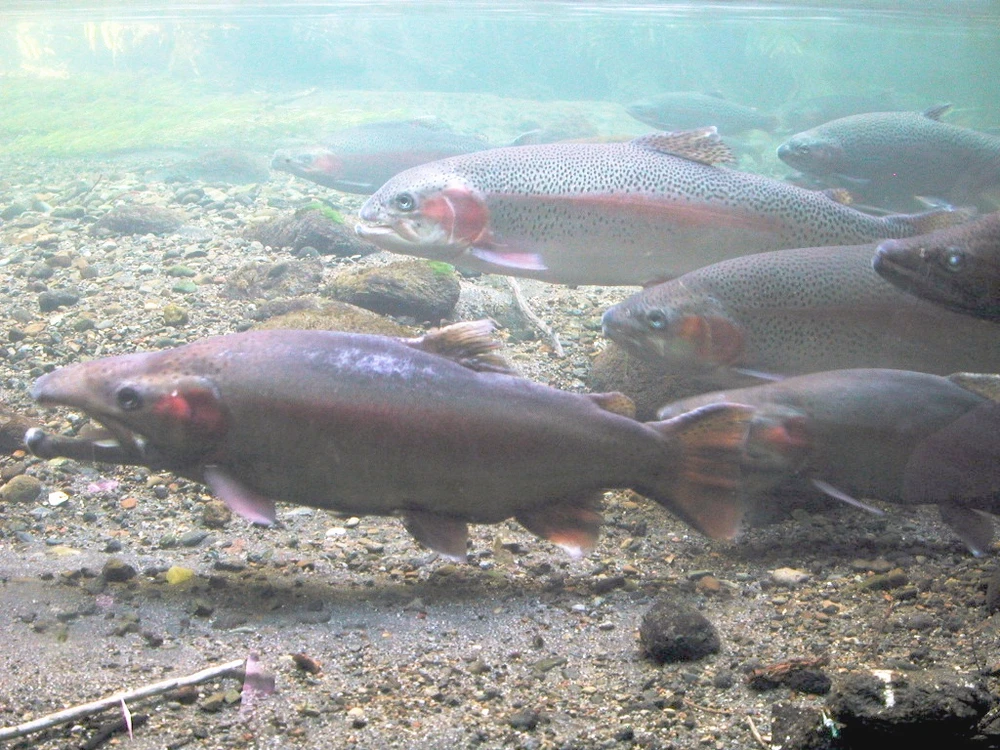
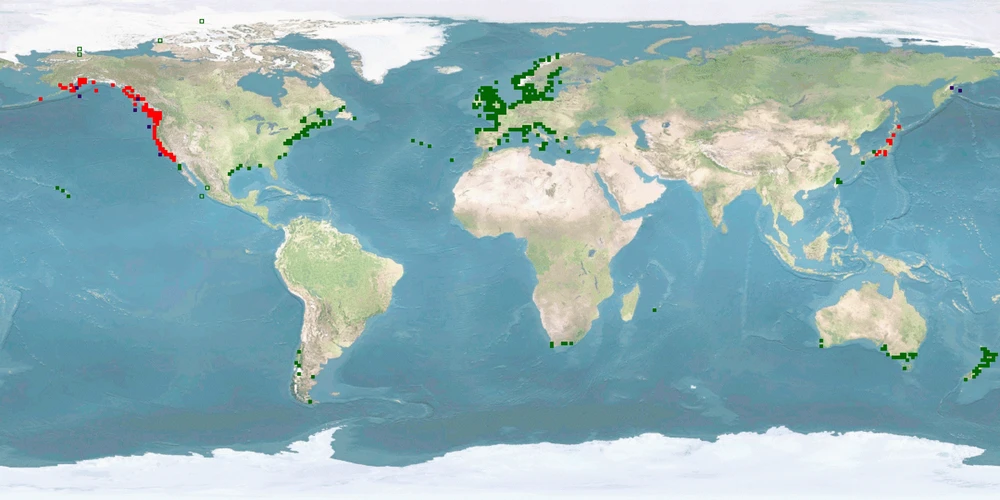







In the "Advice", we summarise findings from the literature regarding some basic criteria that are important to assure good welfare in aquaculture facilities: designing the (artificial) habitat, feeding, growth, reproduction, stocking density, occupation, handling/slaughter. The literature base comes from the "Dossier" (separate tab on top) where one may also find the respective references.
At first sight, the "Advice" might read as something resembling a farming manual, but we would like to stress that it's not meant like this. Yes, we do our best to give the insights from the literature with the aim of assuring good welfare in aquaculture. There are two reasons why the "Advice" is not a rearing manual:
- to set up or maintain an aquaculture facility, many more criteria are important to know and monitor. For example, we do not cover water parameters in detail
- our source for everything on this page is an – albeit vast – literature check. We did not consult with aquaculture experts or got hands-on knowledge ourselves. Some of the studies were done in the lab, though, and might need to be verified for the farming context.
In sum, our idea with the "Advice" is to summarise what the literature has to say about how to assure good welfare in aquaculture. Please also note that the "Advice" is a part of the database that we put on hold a few years ago to focus more on the WelfareChecks. Therefore, all of the 11 "Advices" (2013-2019) certainly need an update.
Probably, we updated the profile. Check the version number in the head of the page. For more information on the version, see the FAQ about this. Why do we update profiles? Not just do we want to include new research that has come out, but we are continuously developing the database itself. For example, we changed the structure of entries in criteria or we added explanations for scores in the WelfareCheck | farm. And we are always refining our scoring rules.
The centre of the Overview is an array of criteria covering basic features and behaviours of the species. Each of this information comes from our literature search on the species. If we researched a full Dossier on the species, probably all criteria in the Overview will be covered and thus filled. This was our way to go when we first set up the database.
Because Dossiers are time consuming to research, we switched to focusing on WelfareChecks. These are much shorter profiles covering just 10 criteria we deemed important when it comes to behaviour and welfare in aquaculture (and lately fisheries, too). Also, WelfareChecks contain the assessment of the welfare potential of a species which has become the main feature of the fair-fish database over time. Because WelfareChecks do not cover as many criteria as a Dossier, we don't have the information to fill all blanks in the Overview, as this information is "not investigated by us yet".
Our long-term goal is to go back to researching Dossiers for all species covered in the fair-fish database once we set up WelfareChecks for each of them. If you would like to support us financially with this, please get in touch at ffdb@fair-fish.net
See the question "What does "not investigated by us yet" mean?". In short, if we have not had a look in the literature - or in other words, if we have not investigated a criterion - we cannot know the data. If we have already checked the literature on a criterion and could not find anything, it is "no data found yet". You spotted a "no data found yet" where you know data exists? Get in touch with us at ffdb@fair-fish.net!
First up, you will find answers to questions for the specific page you are on. Scrolling down in the FAQ window, there are also answers to more general questions. Explore our website and the other sub pages and find there the answers to questions relevant for those pages.
In the fair-fish database, when you have chosen a species (either by searching in the search bar or in the species tree), the landing page is an Overview, introducing the most important information to know about the species that we have come across during our literatures search, including common names, images, distribution, habitat and growth characteristics, swimming aspects, reproduction, social behaviour but also handling details. To dive deeper, visit the Dossier where we collect all available ethological findings (and more) on the most important aspects during the life course, both biologically and concerning the habitat. In contrast to the Overview, we present the findings in more detail citing the scientific references.
Depending on whether the species is farmed or wild caught, you will be interested in different branches of the database.
Farm branch
Founded in 2013, the farm branch of the fair-fish database focuses on farmed aquatic species.
Catch branch
Founded in 2022, the catch branch of the fair-fish database focuses on wild-caught aquatic species.
The heart of the farm branch of the fair-fish database is the welfare assessment – or WelfareCheck | farm – resulting in the WelfareScore | farm for each species. The WelfareCheck | farm is a condensed assessment of the species' likelihood and potential for good welfare in aquaculture, based on welfare-related findings for 10 crucial criteria (home range, depth range, migration, reproduction, aggregation, aggression, substrate, stress, malformations, slaughter).
For those species with a Dossier, we conclude to-be-preferred farming conditions in the Advice | farm. They are not meant to be as detailed as a rearing manual but instead, challenge current farming standards and often take the form of what not to do.
In parallel to farm, the main element of the catch branch of the fair-fish database is the welfare assessment – or WelfareCheck | catch – with the WelfareScore | catch for each species caught with a specific catching method. The WelfareCheck | catch, too, is a condensed assessment of the species' likelihood and potential for good welfare – or better yet avoidance of decrease of good welfare – this time in fisheries. We base this on findings on welfare hazards in 10 steps along the catching process (prospection, setting, catching, emersion, release from gear, bycatch avoidance, sorting, discarding, storing, slaughter).
In contrast to the farm profiles, in the catch branch we assess the welfare separately for each method that the focus species is caught with. In the case of a species exclusively caught with one method, there will be one WelfareCheck, whereas in other species, there will be as many WelfareChecks as there are methods to catch the species with.
Summarising our findings of all WelfareChecks | catch for one species in Advice | catch, we conclude which catching method is the least welfare threatening for this species and which changes to the gear or the catching process will potentially result in improvements of welfare.
Welfare of aquatic species is at the heart of the fair-fish database. In our definition of welfare, we follow Broom (1986): “The welfare of an individual is its state as regards its attempts to cope with its environment.” Thus, welfare may be perceived as a continuum on which an individual rates “good” or “poor” or everything in between.
We pursue what could be called a combination of not only a) valuing the freedom from injuries and stress (function-based approach) but b) supporting attempts to provide rewarding experiences and cognitive challenges (feelings-based approach) as well as c) arguing for enclosures that mimic the wild habitat as best as possible and allow for natural behaviour (nature-based approach).
Try mousing over the element you are interested in - oftentimes you will find explanations this way. If not, there will be FAQ on many of the sub-pages with answers to questions that apply to the respective sub-page. If your question is not among those, contact us at ffdb@fair-fish.net.
It's right here! We decided to re-name it to fair-fish database for several reasons. The database has grown beyond dealing purely with ethology, more towards welfare in general – and so much more. Also, the partners fair-fish and FishEthoGroup decided to re-organise their partnership. While maintaining our friendship, we also desire for greater independence. So, the name "fair-fish database" establishes it as a fair-fish endeavour.

